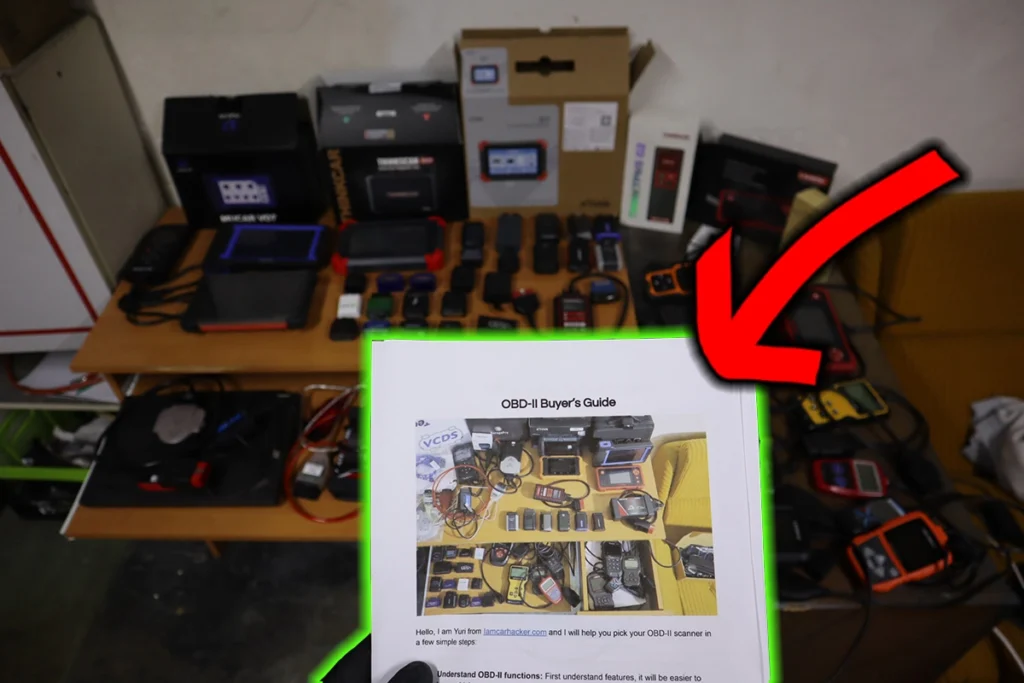The OBD2 code P2014 indicates a problem within the intake manifold runner control circuit, specifically pointing to issues in the position sensor switch circuit in bank 1. This code becomes relevant in situations where the vehicle’s computer detects irregularities in the control of air flow within the intake manifold, which can significantly affect engine performance, as evidenced in the service cases of Mercedes-Benz, Volkswagen, and Ford vehicles.
P2014 quick overview
| Meaning | P2014: Intake manifold runner control circuit malfunction |
| Is it serious? | Yes, this issue can lead to reduced engine performance and fuel efficiency. |
| Possible causes | – Faulty intake manifold runner position sensor – Damaged wiring or connectors – Mechanical issues within the intake manifold – Vacuum leaks |
| How to diagnose? | Inspect the intake manifold for physical damage or signs of disconnection. Check wiring and connectors related to the intake manifold runner control system for damage. Test the intake manifold runner position sensor for proper operation. Conduct a smoke test to identify any vacuum leaks in the system. Use manufacturer-specific diagnostic tools (like Mercedes DAS or VW adaptation) for further diagnostics. |
P2014 Meaning
For those not well-versed in automotive mechanics, the P2014 code is a technical way of saying there’s a glitch in how your car manages the air that flows into the engine. This system helps your engine “breathe” better, affecting how smoothly it runs and how much fuel it uses. Problems here can make your car feel sluggish or jumpy and might cause the check engine light to turn on. It’s like if your car has a cold and can’t breathe properly, it won’t perform at its best.
Free PDF: How to choose OBD2 scanner

I’ve made you a free PDF to choose the OBD2 scanner in 5 minutes.
✅ Which OBD2 scanner is best?
✅ Which type should you get (DIY, Pro, Hobby)
✅ What is the best scanner for the exact brand/feature (e.g best for BMW)
✅ How to get a Bi-Directional tool for as cheap as $40
✅ Discount coupons for scanners
PDF is 100% free and it is designed to help you pick a scanner in less than a few minutes! Not a boring 50-page guide.
Just tell me where to send it.
How to fix P2014 – learn from mechanics
I looked into P2014 service cases at iatn.com website where in the private forums the mechanics seek advice from other mechanics. I looked up a bunch of cases to help you decide how to fix your issue and see what would a real mechanic do to solve it.
Case #1: Mercedes
Vehicle Information 2005 Mercedes-Benz C230 Kompressor 1.8L
Issue + Repair History
- Check engine light on after frontal collision repair.
- Codes: P2014, P2029, P0172, P0238.
- Conflicting readings between scanners.
- Engine performance significantly reduced.
- Visual inspection of cam timing solenoids and harness.
- Smoke test revealed large leak in intercooler area.
Other OBD2 Codes + Test Results
- P2014: Adjustable cam timing solenoid short or open (Baum scanner)
- P2029: Engine speed signal implausible (Baum scanner)
- P0172: System rich bank 1 (Snap-on scanner generic)
- P0238: Boost sensor A circuit high (Snap-on scanner generic)
- Recirculating air flap actuator voltage and altitude pressure both at zero.
Mechanic Suggestions
- Check harness and affected items for opens or shorts.
- Use Mercedes DAS to reset everything and start from scratch.
- Carefully inspect hoses on the intercooler for looseness or disconnection.
- Follow harness wires carefully for any accident-related damage.
Final Fix Discovered a large leak in the intercooler area where the inlet pipe attached to the intercooler was not securely assembled by the body shop after collision repair. After reattaching the hose securely and clearing codes, acceleration performance returned and codes did not reappear. All systems normalized after the repair.
Case #2: Volkswagen
Vehicle Information 2006 Volkswagen Jetta 2.0T 2.0L Engine
Issue + Repair History
- Replaced timing belt, 1 camshaft, high-pressure fuel pump, and follower due to broken high-pressure fuel pump and damaged camshaft.
- Replaced intake manifold with flapper motor.
- Engine continues to bring back check engine light with code P2014 (intake manifold runner position sensor switch circuit bank 1).
- Misfires resolved by replacing 2 coils.
Other OBD2 Codes + Test Results
- P2014: Intake manifold runner position sensor switch circuit bank 1.
- P1098: Intake manifold tuning valve position sensor open or short to plus.
- Snap-on scanner showed P0172: System rich bank 1 and P0238: Boost sensor A circuit high.
Mechanic Suggestions
- Check for proper connection of sensor.
- Verify if the position sensor is connected on the opposite end of the manifold and ensure it’s properly connected.
- Ensure the runner motor is the correct part number and the linkage is snapped in before adaptation.
- Test the flap actuator for vacuum leak and operation. Verify sensor wiring to ECM for continuity.
- Check for any TSBs regarding the code and consider replacing the intake manifold with the modified version.
- Make a custom overlay harness from the motor to the ECM if needed.
Final Fix Discovered a broken wire in the harness. Overlaid another wire from the low fuel pressure sensor to the flap motor, which resolved the issue. Also replaced the low fuel pressure sensor while troubleshooting. After the repair, cleared codes, performed adaptation, and the car has been running great with no check engine light or issues.
Case #3: Ford
Vehicle Information 2003 Ford Ranger XL 2.3L Engine
Issue + Repair History
- Came in with codes P2014, P0316, B1600, P0300, P0302, P0304, and a misfire.
- No history of problems until that morning.
- Swapped #3 & 4 injectors, replaced coil pack, swapped #3 & 4 plugs and wires, cleaned MAF and MAP sensors.
Other OBD2 Codes + Test Results
- P2014: Intake swirl valve
- P0316: Misfire during the first 1000 revolutions
- B1600: Key transponder
- P0300: Random misfire
- P0302: Misfire cylinder 2
- P0304: Misfire cylinder 4
- Compression: 210 psi
- Fuel pressure: 60 psi
Mechanic Suggestions
- Check the PCV system and IAC motor.
- Disconnect the MAF sensor to check for any change.
- Consider that Ford misfire codes may indicate the wrong cylinder.
- Inspect vacuum lines to the IMRC (intake runner control) solenoid on the intake manifold.
Final Fix Replaced the MAF sensor, which improved the situation but did not completely eliminate the #4 random miss. After discussing with the customer, replaced the plugs, wires, and fuel filter, which fixed the issue.
How to diagnose P2014
I made you an overview of solving this DTC, based on all the advice that was suggested by certified mechanics to address this issue in previously mentioned service cases.
| Diagnostic Step | Brief Explanation |
|---|---|
| Inspect the intake manifold and related components | Look for any signs of damage, disconnection, or improper assembly. |
| Check wiring and connectors | Ensure there’s no damage or corrosion that could interfere with electrical signals. |
| Test the intake manifold runner position sensor | Confirm it’s operating correctly and efficiently managing air flow. |
| Conduct a smoke test | Identify any leaks that could affect the air/fuel mixture. |
| Use manufacturer-specific diagnostic tools | Perform advanced diagnostics with tools like Mercedes DAS or VW adaptation. |
In all three service cases, the mechanics highlighted the importance of inspecting the intake manifold system, checking for leaks, and ensuring all electrical connections are intact. These steps were crucial in diagnosing and resolving the issues associated with the P2014 code, ultimately restoring engine performance and clearing the check engine light.
Free PDF: How to choose OBD2 scanner

I’ve made you a free PDF to choose the OBD2 scanner in 5 minutes.
✅ Which OBD2 scanner is best?
✅ Which type should you get (DIY, Pro, Hobby)
✅ What is the best scanner for the exact brand/feature (e.g best for BMW)
✅ How to get a Bi-Directional tool for as cheap as $40
✅ Discount coupons for scanners
PDF is 100% free and it is designed to help you pick a scanner in less than a few minutes! Not a boring 50-page guide.
Just tell me where to send it.

Hi, I am Juraj “Yuri” Lukacko. I got frustrated by unhelpful and scammy mechanics, so I decided to learn everything about car diagnostics myself. I test dozens of new car diagnostic tools every month along with learning new strategies to fix and customize cars. About Juraj Lukacko (Yuri)